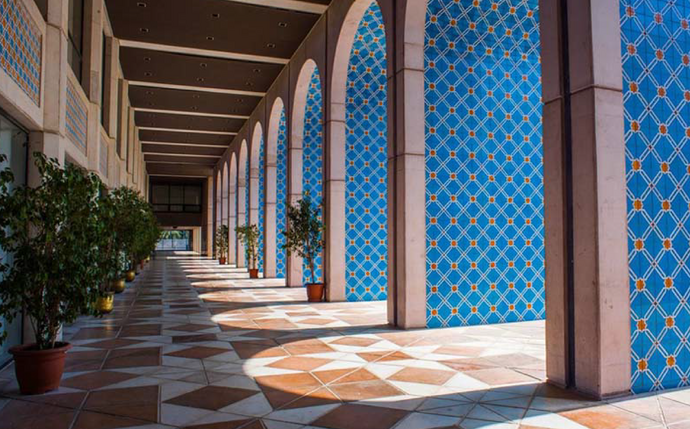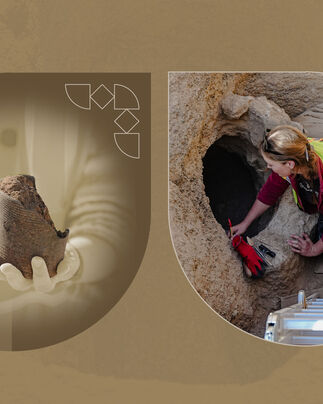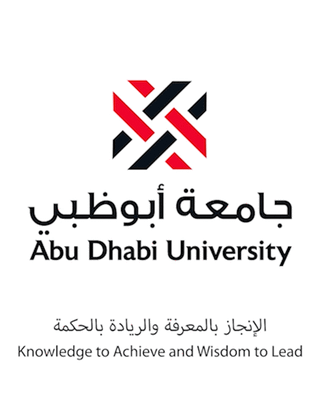The Department of Culture and Tourism – Abu Dhabi’s (DCT-Abu Dhabi) Modern Heritage initiative is helping to preserve 64 buildings and sites that contribute to Abu Dhabi’s cultural identity through their architectural, historical, societal or scientific significance, protecting them for future generations.
As part of its Modern Heritage Conservation Initiative, the Department of Culture and Tourism Abu Dhabi (DCT Abu Dhabi) identifies, safeguards, and maintains sites that narrate the Emirate’s more recent past. This falls in line with the Cultural Heritage Law decreed in 2016 by Abu Dhabi, which recognises the inclusion of modern heritage along with archaeological sites and historic buildings as part of its cultural heritage.
DCT - Abu Dhabi has revealed the first set of 64 modern heritage sites, requiring immediate and unconditional protection. No demolition applications will be allowed for these buildings, instead, priority will be given for them to be maintained and rehabilitated in accordance with their designated grade.
His Excellency Mohammed Khalifa Al Mubarak, Chairman of DCT Abu Dhabi, said: “Part of DCT Abu Dhabi’s mission includes preserving Abu Dhabi’s culture and identity. Our architectural and urban heritage is an extremely important element of our recent history, which deserves to be recognised and protected.
“It is our civic responsibility to guard this modern heritage, not only because of the value it holds in our collective memory as residents of this emirate, but because of the historical testimony it has in telling Abu Dhabi’s story through architectural and urban identity between the traditional past and our aspirations for the future.”
His Excellency Mohamed Ali Al Shorafa Al Hammadi, Chairman of the Department of Municipalities and Transport said: “The Modern Heritage Conservation initiative plays a crucial role in maintaining the city’s public appearance, identity, and its urban cultural heritage. The partnership with the Department of Culture and Tourism - Abu Dhabi reflects DMT’s commitment to developing smart and sustainable cities, while preserving the city’s identity, thereby enriching the quality of life and visitors’ experience in Abu Dhabi.
“DMT's involvement in this ambitious initiative aligns with its mission to foster urban development and infrastructure management to raise the quality of life for Abu Dhabi’s community. DMT recognises the importance of this initiative in safeguarding the city's landmarks and structures that bear witness to its growth and development. The initiative also reflects the efforts to preserve the beautiful harmony between heritage and modernity, making it an invaluable undertaking.”
By taking a closer look at all 64 structures, it is evident that they collectively stand witness to the emirate’s history as it has grown over the years. The list is a representation of diverse types of buildings – a hospital, a theatre, a school, mosques, parks, hotels, markets, and commercial buildings among many others. For instance, Al Manhal Palace was the first purpose-built presidential palace where the flag of the state was raised after the UAE joined the United Nations in 1971. Another example is Al Ibrahimi Building, an award-winning structure and one of the capital’s architectural masterpieces designed by prominent Egyptian architect Dr. Farouq El Gohary. There is also large-scale developments such as Sheikh Zayed Sports City, a distinct development in Abu Dhabi’s urban planning which hosts international and regional events in the city.
As part of the Modern Heritage Conservation Initiative, DCT Abu Dhabi will continue to survey Abu Dhabi’s built environment to identify and inventory other modern heritage sites to be formally registered for protection and conservation.
The full list of the modern heritage sites includes Cultural Foundation; Abu Dhabi Bus Terminal and Taxi Stand; Al Manhal Palace; Zayed bin Sultan The Second Mosque; The National Theatre; Former Al Jazeera Hospital; Sheikh Zayed Sports City; Islamic Institute Complex (Former UAEU); Niqa Bin Ateej Water Tank and Park; Radisson Blu Al Ain (Hilton Al Ain); Al Jahili Eid Prayer Grounds; Al Khalidiyah Park; Al Ain Old Central Market; Abu Dhabi Chamber of Commerce and Industry Tower; Al Bateen Mall; Intercontinental Hotel - Abu Dhabi; Radisson Blu - Abu Dhabi (Hilton Abu Dhabi); Hili Old Market (Shaabi Market); Zayed Al Awwal Secondary School – Oud Al Hassa; Former ADNOC Headquarters; Al Maqta Conservation Area; Former Vehicles & Drivers Licensing Directorate; Bida’ Zayed Central Souq; Arab Monetary Fund Building; Etisalat Headquarter – Abu Dhabi; Federal National Council and Saeed Al Kalili (Al Ibrahimi Building).
The other modern heritage sites comprise Heirs of Salem Khadem Al Qubaisi Building; HH Sheikh Mohammed Bin Zayed Tower (Blue Tower – Union National Bank); Hamed Center; Hamdan Centre; Obaid Al Mazrouai; Butti Al Otaiba Building; Harib Tower Sheraton Hotel; Le Méridien Hotel; Al Ghaf Tree Park; Airport Road Park Armed Forces Officers Club & Conference Centre; Al Omeirah Building (Adidas); Al Hobbara Water Tank (SBY Island); Bida’ Zayed Pool; Liwa Rest House; Remah Rest House complex; Salman Khalifa Al Mazroei; Otaiba Building; Mesaied Khalid Al Mansoori; The Central Bank of the UAE; Al Ain Vegetable & Fish Market (Shibrat Al Ain); City Terminal (Abu Dhabi International Airport); Abu Dhabi City Municipality Building; Department of Economic Development; Department of Finance; Abu Dhabi Media Company; Abu Dhabi Oil Co. – Japan (ADOC); Al Manhal Family Medicine Clinic; Al Zaab Old Fire Station; Khalifa Al Suweidi Building; Elenco Building; Former Al Dhafra Region Municipality Building; Madinat Zayed Vegetable, Meat & Fish Market – Abu Dhabi; Abu Yalee Mosque; Al Ain Old Gold Souk and Al Nyadat Eid Musalla.









